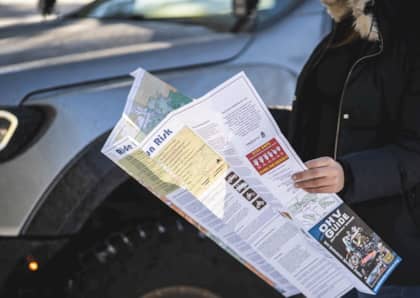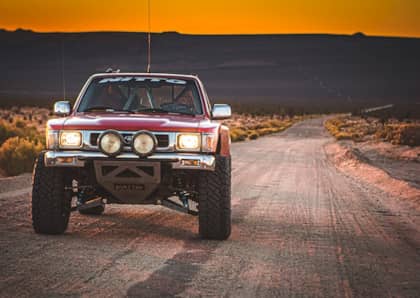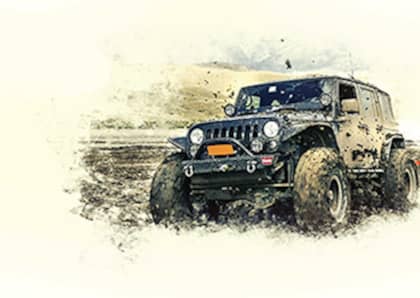5 Ways to Avoid Damage to Your Off-Road Rig on the Cheap
Overcoming unfortunate circumstances during off-road adventures lead to great storytelling with friends and family, especially if you can say you saved the day. Being well-equipped to handle any thinkable (and unthinkable) recovery situation will certainly help you get out of a jar of pickles. We understand that level of preparation isn’t always possible, so we’re bringing you good news. You don’t have to break the bank on the best-of-the-best vehicle armor and recovery mods to avoid damage to your rig. Here are five ways that resourcefulness and know-how can win the day.
Give Your Rig–and Yourself–a Once-Over
Preparation is the key to a successful off-road experience. Make a checklist and keep it handy every time you plan a trip and be sure to include the following basics:
- Check all the fluids. If the vehicle is due for an oil change, do it before departing. Examine your brake fluid–a squishy brake pedal could become dangerous quickly. Keep those gears happy and healthy, even on steep inclines by making sure your transmission fluid levels are where they need to be. Wheeling puts stress on the engine and generates a lot of heat, so it's important to maintain your coolant at the proper level. The ability to see obstacles in front of you is a good thing, so bring extra windshield washer fluid.
- Assess the condition of your wiper blades. Dirty windows are a part of having fun on the trail, but zero visibility can ruin a good time.
- Visually examine your brakes, including rotors, pads and brake lines. Brake functionality is important in controlling speed on technical trails and it can cause serious harm in the event of a failure.
- Is there an up-to-date easily accessible fire extinguisher in your vehicle? You’d better get on that.
- Examine your tires. Choosing the right tire for the terrain is critical. Nitto Tire’s Ridge Grapplers have an unbeatable tread pattern for mud, dirt, gravel and everything in-between. Carrying a spare tire is good, but being prepared to take the tire off is just as important. Pack the correct tools, like a jack and tire iron to make easy work of a damaged tire. Make sure the tires are at the recommended pressure for trails or crawling. Don’t forget to inflate before returning to pavement.
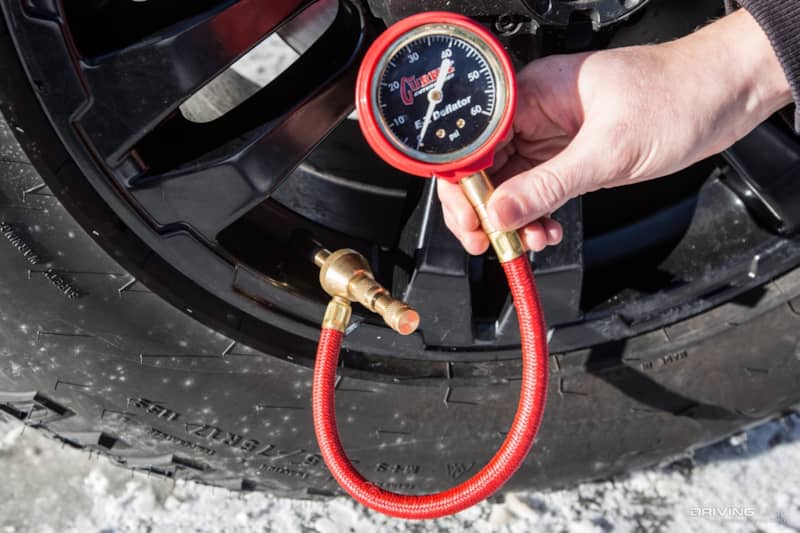
Aside from the above vehicle preparation, taking a quality off-road driving course is one of the best things a driver can do. The most common mistake made by 4x4 enthusiasts is assuming that there is nothing more to learn. On the contrary, whether a driver has been crawling on the trails for years or only has hours of seat time, there is always much to learn by attending driving, safety and recovery courses.
Know Your Limits
Off-roading has many variables, including changing weather conditions, unexpected closed routes, and other things that just don’t go as planned. It’s important to be flexible and adapt to the circumstances at the turn of a wheel, even if it means choosing a different trail, or worst-case scenario, calling it a day and limping home.
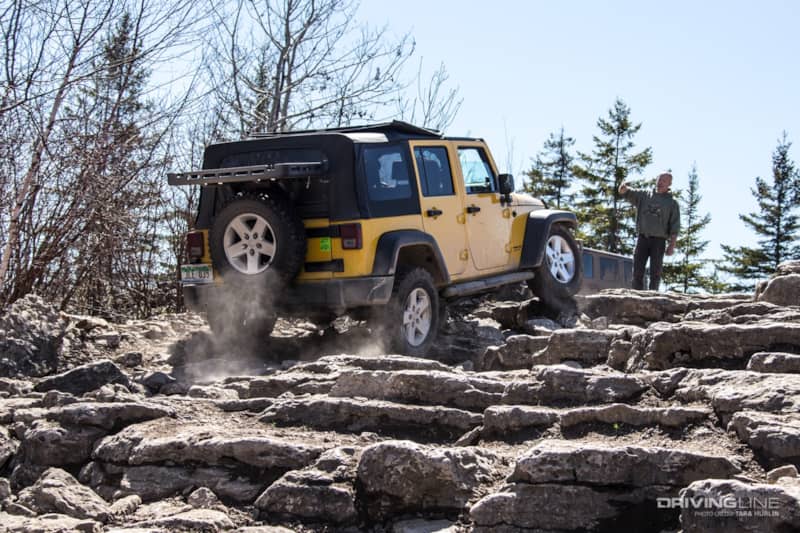
Failing to recognize an obstacle that is too difficult for your vehicle is a common cause for trouble. Breakage can be difficult to predict until you’re already stranded on the trail. Extreme caution should be taken if trying to push the vehicle to a position that causes more strain than it can handle. If an off-road rig is having a difficult time battling the terrain, you may want to re-evaluate how safe (or smart) it is to continue. Ignoring the issue and pushing forward as planned could put your vehicle, yourself and any passengers at risk. The most skilled drivers can recognize when a trail is too difficult and turn around rather than risk failure.
Scope Out Your Route
Encountering unknown terrain and barreling through it without much thought could find you stuck in a rut, flooded in deep waters, or worse. Adequately researching the planned route by downloading maps of the area, using apps like Gaia GPS, or talking to someone who has taken the route before will give you the upper hand. Some high-tech off-roaders will take aerial photos with a drone before proceeding through a narrowing trail.
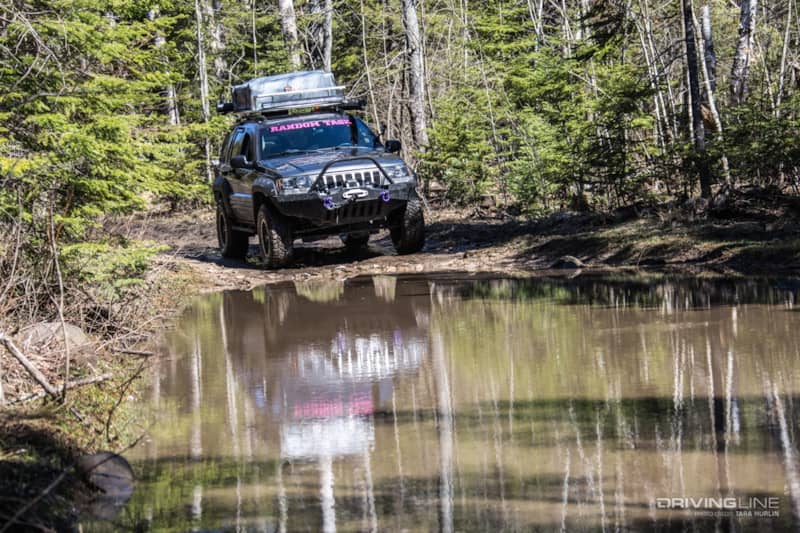
No matter how much you plan ahead, once you’re out there, the likelihood of rolling up to unexpected obstacles is high. For example, countless off-roaders get stranded in deep water simply because they didn’t check the depth or bottom conditions before venturing across. Standing water often hides the type of thick mud that grips the tires and river crossings can quickly become a disaster if the water is deeper than the vehicle can handle. Testing the water depth before venturing across a river or other body of water is an absolute must.
Bring Your Friends
Being aware of your vehicle’s ground clearance and familiarity with your approach and departure angle clearances will help you in dodging obstacles that would otherwise damage your rig. This also includes the break-over angle, which is the space between the tires and the middle of the vehicle’s underside. Your rig could easily become a teeter-totter by getting hung up on a rock as you navigate down from the obstacle. While standing outside of the rig, a spotter can help you navigate through the best line and keep an eye on your vehicle’s clearance from all angles.
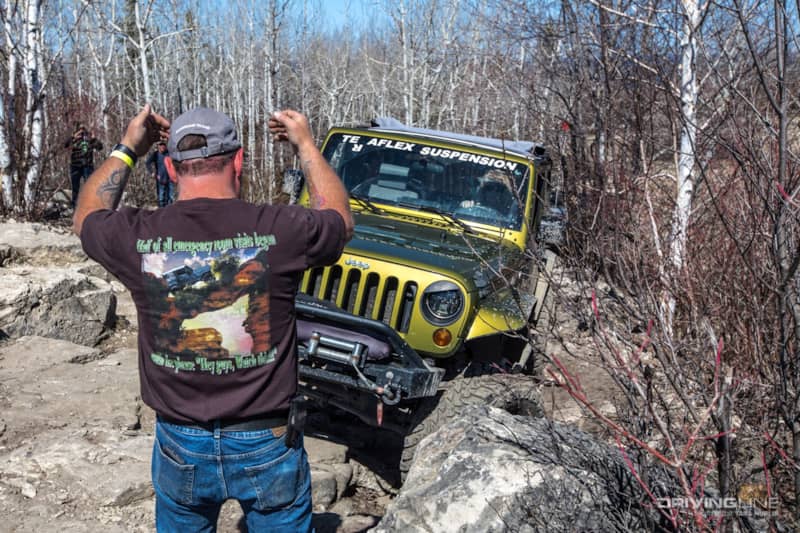
Sure, equipping your rig with skid plates, rock sliders and body armor will provide protection from frame and body damage, but depending on your fabrication skills and material availability, expense can add up quick. All the armor in the world won’t change the fact that you should never go off-roading alone. Bringing a co-driver/spotter, or heck, tagging along with a larger group of off-roading buddies, will make avoiding damage and getting out of a tough spot that much easier. A friend in another vehicle can tow you out of a bind, or they can get help if a professional tow is needed, or aid if there is a medical emergency. The more the merrier, especially when taking on tough terrains, that way no off-roader is left behind.
Tread Lightly
Don’t be “that guy.” Speed and momentum are seldom the solution for tackling obstacles. More than likely you’ll end up with a damaged rig, ripped up countryside, and a lot of dirty looks from fellow off-roaders. A good rule of thumb, endorsed by Land Rover, is to navigate obstacles as slow as possible and only as fast as necessary. For example, when encountering a muddy incline followed by a boulder on the trail, the proper technique is to maintain enough speed to get to the top, but not too much to prevent negotiating the next obstacle.
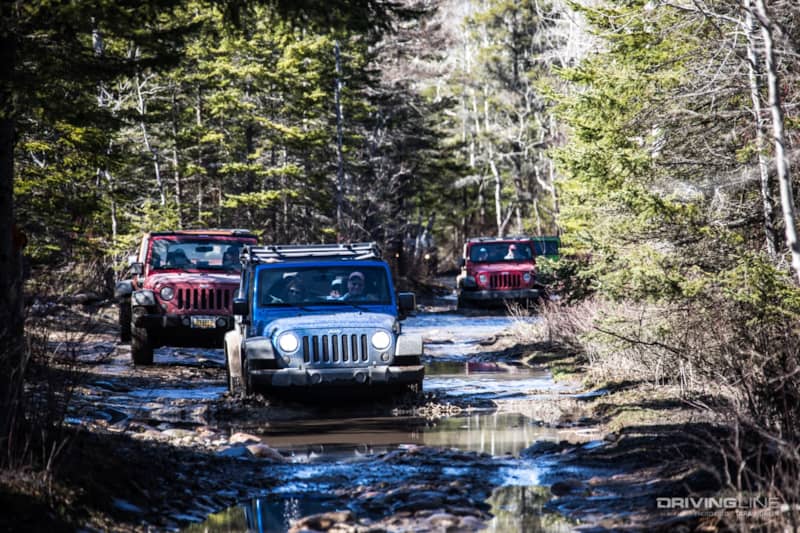
Minimize your environmental impact and tread lightly by staying on marked trails and avoiding designated wilderness areas. Obey posted signs and closures–they are there for a reason. Pack it in, pack it out, and leave no trace behind.
Now that you have the know-how when it comes to avoiding damage to your vehicle, make sure you are prepared for emergencies that could happen off-road with this list of must-haves.




